2015-06-17
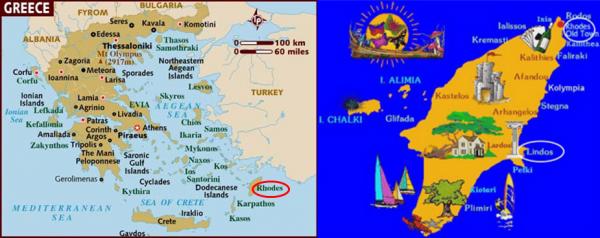
【Aiden in English】
Today, I visited Rhodes, Greece's most easterly island in the Aegean Sea. You shouldn't be confused with Rhode Island on the east coast of the USA, or a "road," as in the strip of land cars travel on. They are entirely different. How much? Well, you'll know it after reading this. This sunny Aegean gem was once the site of the Colossus of Rhodes, a statue created to honor the sun god Helios. It was at least 110 feet/34 meters high and was built around the 3rd century BC as one of the Seven Wonders of the Ancient World. Heat is hazardous, you know. Although it suits the olives, I prefer not to get heatstroke or dehydration. Heat, combined with the steps involved in Julius Caesar's death, is a force that not even lemons or olives can stop. These were approximately 300 slippery, significant, steep, and treacherous steps that could trap anyone standing on them. These weapons were used to protect the Acropolis of Lindos. The Acropolis is a standing structure built on a rocky hill as a fortress. To get to the Acropolis, over 320 steps stood in your way. I was going to reach it, too, no matter the cost. I left out two factors that could make a difference in today's outcome. First, the steps were as slippery as ice. They weren't wet or anything. It was just the type of cobblestone that gave it a sliding motion whenever I planted my feet. The second thing was that the temperature rose, and the sun grew more prominent, rather than being cooler from the sea breeze, since we were at a higher elevation. It seemed we were getting closer to the sun, which wasn't possible. Please tell me that hallucinations are a symptom of heatstroke because the sun is getting a little too big for what I call a "survival size." And I thought we still had 5 billion years before the sun imploded. Boy, meteorologists were as wrong as ever. Finally, we reached the Acropolis of Lindos, and it looked beautiful. The island of Rhodes was spread below. Rolling hills turned to mountains stretching into the distance. Olive trees dotted the landscape, and white, blocky, small buildings clumped together made up the towns on the hilly side. The coastal area looked quite different. A wave of turquoise blue reached the horizon, colliding on a line almost inseparably. The water faded into a light blue and seemed to flow into the sky. The Acropolis of Lindos was dedicated to Athena, the goddess of wisdom and war strategy, typically for defensive purposes. Therefore, having her as the host goddess was a logical idea. The Temple of Athena Lindia was built for her at the summit of the fortress, and below was a semi-circular arrangement of pillars and a corridor. The lowest floor was the support area, which was later converted into a storage area and had walls added. This Doric architecture was all ground, majestic, and… 2,300 years ago. The temple is gone, and only half of the pillars remain. It is one of the remaining ancient structures symbolizing the past. Strolling through the old town, the Palace of the Grand Master of the Knights transported us back to the 14th century, when the Knights Hospitaller controlled Rhodes. This citadel of the Early Byzantine fortress was pierced with Gothic portals, imposing towers, a square courtyard, and hundreds of vaulted rooms featuring recovered mosaics dating back to as early as the 2nd century BC. Mosaics are pictures made of tiny natural pebbles. You'll know when a masterful work is done because you can't tell the difference between a mosaic and a painting. These art images were all about Greek history and mythology, giving me my share of social studies today. One piece of work I found interesting was how Helios, the god of Rhodes, was the host. One day, Zeus split the world into sections for each god. Helios wasn't there, as he traveled east to west across the sky daily, serving as a charioteer. He didn't get a piece because Zeus forgot, and Zeus was frustrated that he had to redo the process. An island rose from the sea, and Helios saw a beautiful nymph. He asked Zeus for this island only, so that's why Rhodes has an average of 300 days of sunshine a year, regardless of how much sunscreen this country consumes yearly. However, many works were in Ottoman possession until the 1940s. Ancient structures carry many stories, both oral and scenic. A thousand years later, people will think, “Wow, where did the Acropolis of Lindos go?” It will be gone, and most likely, there will be more and new historic sites like Rhodes. 【红霞译】
今天我们去了希腊爱琴“波浪”海最东边的罗得岛““林中空地””,千万别跟美国东海岸罗德岛州混为一谈,同时也不要误以为这里所指的是汽车道路,其实彼此之间完全不同,区别真的很大?你读完本文介绍之后便会明白怎么回事。这颗阳光明媚的爱琴海明珠曾因罗得斯岛赫利俄斯“太阳神”巨像而闻名天下,该铜像建于公元前三世纪,高达110英尺/34米,被视为古代世界七大奇迹之一。
你知道酷暑有多恐怖,尽管对橄榄百利而无一害,但此时此刻我唯恐避之不及,生怕中暑或者脱水,高温外加足使尤利乌斯·凯撒“年轻·头发”大帝命归西天的台阶构成一股力量,连柠檬或橄榄甚感无奈,脚下三百来蹬又滑又大又陡又险的石梯,稍踩不慎就会人仰马翻,堪称林多斯“美村”卫城独特的防御手段。卫城巍然矗立在山包顶头,曾被用作军事堡垒,欲想身在其中,必须要迈过320多层台阶,但无论付出多少代价,我定要勇往直前。
今天进展如何取决于下面两个因素,第一:石阶滑如冰块,与潮湿毫无关系,踩上这种鹅卵石令人顿觉时光磨蚀岁月积淀;第二:随着高度增加,扑面而来的阵阵海风丝毫没有一点凉意,气温反而飙升,太阳似乎越来越大,我们之间的距离变得越来越近,简直不可思议。莫非幻觉是中暑的标志,因为太阳看上去的确有点超乎“生存尺寸”,可我误以为太阳起码还有50亿年寿命,唉呀,气象学家总是说话不算数。 我们好不容易登上林多斯卫城,罗得岛风光尽收眼底,连绵起伏的海岸丘陵纵深朝群山方向蜿蜒而去;橄榄树婀娜多姿,恰到好处地点缀海岛的秀美;白色块式小型建筑群依山而建,自然形成社区规模的山乡城镇。傍海一侧景色完全不同,翡翠一般的波纹拍打着地平线,欢快的浪花紧紧地拥抱在一起,海水逐渐变为淡蓝色,宛若天空飘动的云朵。 林多斯卫城专为女神雅典娜而设,顾名思义正是祭拜女神的地方,雅典娜·莉迪亚“智慧与战争女神”(通常重在保护城邦)神庙被造在城堡顶端,下面建有半方形石柱和走廊,底层地基部分后被改作储藏室及防御工事,这座2,300多年的多利安式建筑坚实雄伟,目前其庙宇早已不复存在,仅有半成栋梁傲然挺立,不失为一处承载沧桑镌刻历史的古堡遗迹。 漫步于罗德城老城区,另一个哥特式建筑“大教长宫”把我们带入十四世纪医院骑士团统治年代,它为早期拜占庭的要塞堡垒,贯串哥特式的入门、高大挺拔的楼塔、方形宽敞的庭院以及数以百计的拱顶厅堂等建筑特征,室内保留不少包括公元前二世纪流传下来的镶嵌艺术。这里的马赛克均由天然细小的鹅卵石拼制而成,单凭你无法辨认马赛克与绘画之间的差异,足以说明其装饰作品已达到登峰造极的水平。大教长宫内所展示的图案全部都与希腊历史与希腊神话相关,恰巧强化了我在社会常识课上学到的知识,有一件关于赫利俄斯的艺术珍品引起了我极大兴趣。故事说的是,有一天,宙斯正在给诸神分配世界格局,身为车夫的赫利俄斯因忙于从东到西遨游太空而缺席现场,此时此刻宙斯偏偏忘记了他,因而赫利俄斯什么地盘也没有得到,正在宙斯纠结之际,不料一个岛屿从海面腾腾升起,赫利俄斯看到上面有位美丽的仙女,随即要求神王赐给自己这个宝地,这也是为什么罗德岛每年平均三百天艳阳高照,暂且不说全国为此要耗掉多少防晒霜。然而在奥斯曼“幼鸨”占领期间,不少文化瑰宝遭到破坏,直到廿世纪四十年代才开始逐一修复。 古代建筑记载了许许多多可歌可泣的故事,再过千年之后,人们肯定在想:“哇,林多斯卫城怎么没了?”一切终将完结,将来世上极有可能涌现出更多其它的历史遗迹,像罗德岛一样值得回味。
Today in History(历史上的今天): 2015: Rhodes, Grand Master of the Knights(希腊罗得岛·大教长宫) 2015: Rhodes, Acropolis of Lindos in Greece(希腊罗得岛·美都卫城)
2012: 摘草莓(Shady Brook Farm) 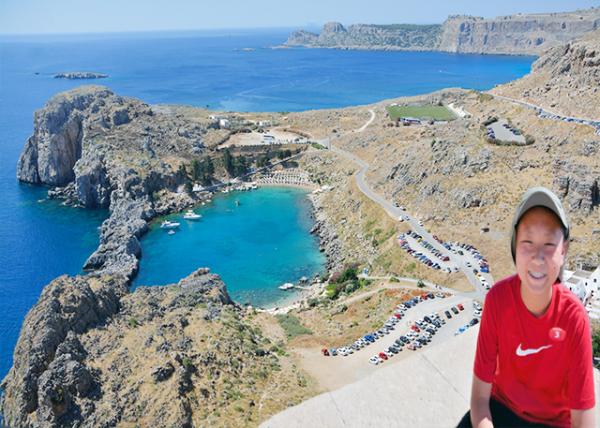 St Paul's Bay, the spot where the Apostle Paul landed when he arrived in Rhodes during his missionary journey in the 1st century AD St Paul's Bay, the spot where the Apostle Paul landed when he arrived in Rhodes during his missionary journey in the 1st century AD
(圣保罗“谦卑”湾·据说公元1世纪使徒保罗在传教之旅中抵达罗得岛时登陆的地方 06-17-2015)
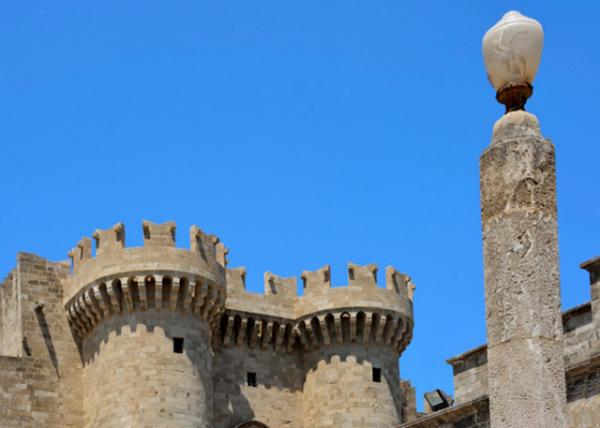 Palace of the Grand Master of the Knights Palace of the Grand Master of the Knights
(罗德骑士团大团长宫殿)

Tongue of Auvergne (法国奥弗涅“高卢部落”骑士区 06-17-2015) 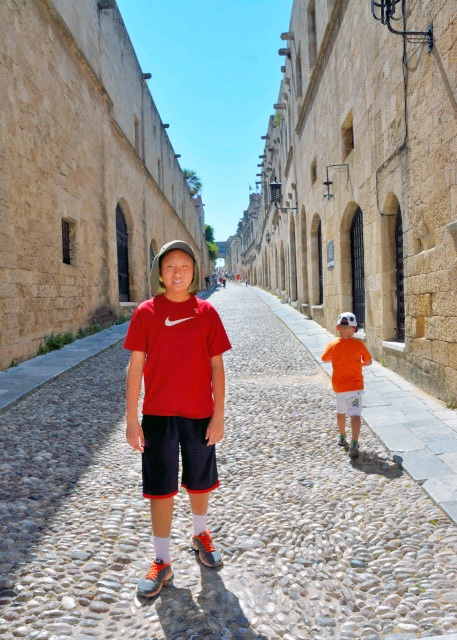
Avenue of the Knights (骑士大道 06-17-2015) 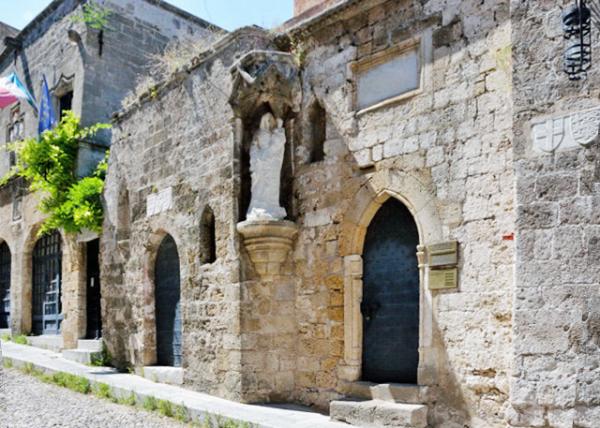 Albergo di Francia @ French Knights' Quarters Albergo di Francia @ French Knights' Quarters
(法国骑士区·法国客栈“高级住所”) 
Inn of Provence, Dated from 1518 w/ a Frame Enclosing the Coat of Arms of the Kingdom of France, Those of Grand Master of the Order Fabrizio dell Carretto, & the Coats of Arms of Knights Jean Cheron (罗旺斯“罗马统治下的省”客栈·可追溯至1518年,大门顶饰含有法兰西王国的纹章、法布里齐奥·德尔·卡雷托勋章骑士团总指挥的纹章以及让·谢隆骑士的纹章) 
Medieval Crest & Gate on Avenue of the Knights (骑士大道·中世纪顶饰和大门 06-17-2015)
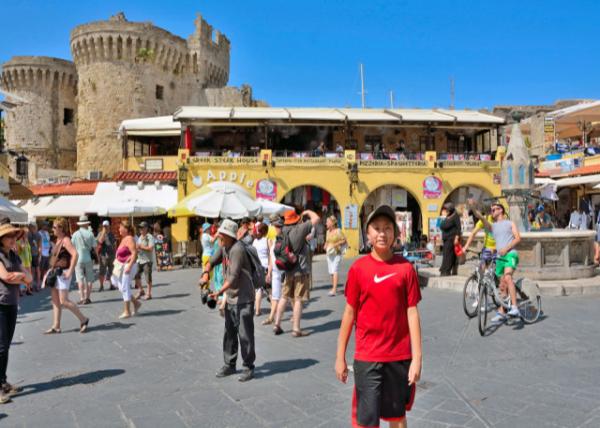 Medieval Fountain @ Ippokratous Square Medieval Fountain @ Ippokratous Square
(主广场·中世纪喷泉 06-17-2015) 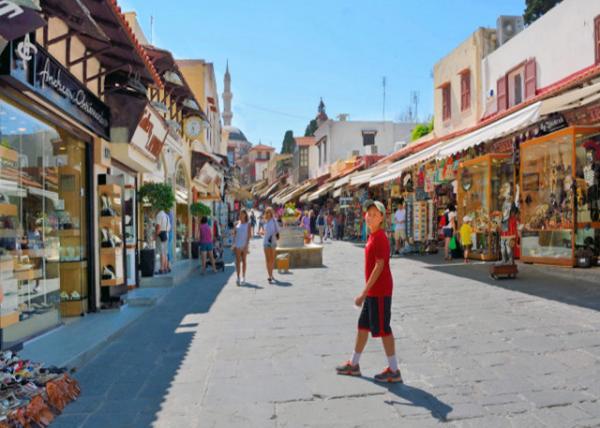 Ancient Agora (古集市 06-17-2015) Ancient Agora (古集市 06-17-2015)
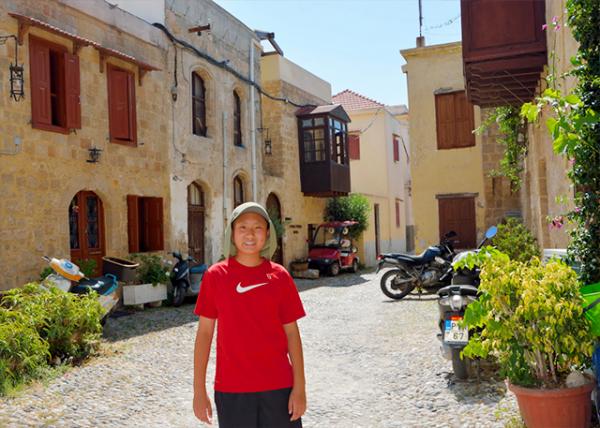 Apollonion Street in the Old Town Apollonion Street in the Old Town
(老城阿波罗“光明之神”街 06-17-2015)
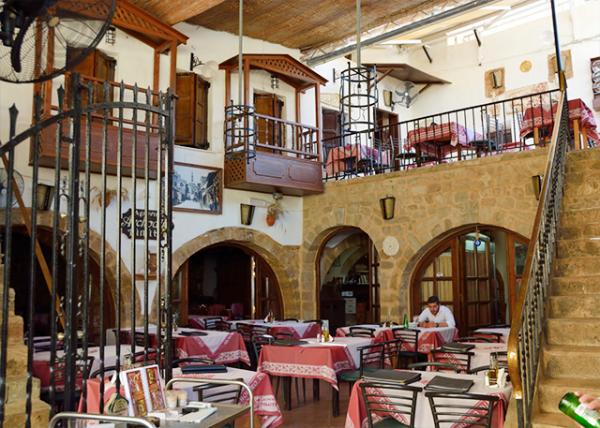 Archodiko Dimitris Tavern (大地之母豪宅酒馆) Archodiko Dimitris Tavern (大地之母豪宅酒馆)

Sokratous Street toward Suleiman Mosque (通往苏莱曼“和平使者”清真寺的苏格拉底“智慧”街)

Suleiman Mosque (苏莱曼清真寺) 
Minaret of Suleiman Mosque (苏莱曼清真寺·宣礼塔) 
Mehmet Agha Mosque (穆罕默德·阿迦“先知大师”清真寺 06-17-2015)  Tsambika Beach (察姆比卡“火花”海滩 06-17-2015) Tsambika Beach (察姆比卡“火花”海滩 06-17-2015)
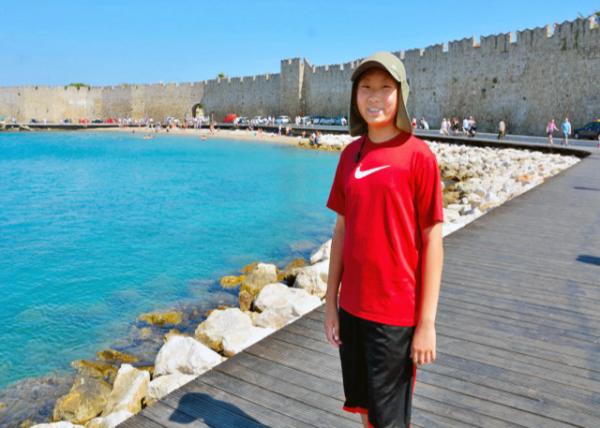 The Tongue of Castile The Tongue of Castile
(西班牙卡斯提“城堡之地”骑士区 06-17-2015) 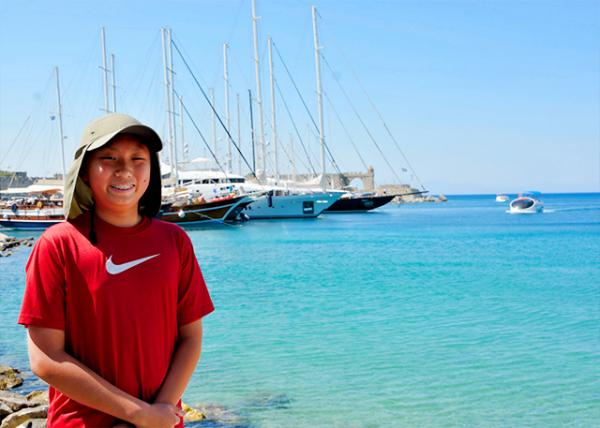 Mandraki Harbor (曼德拉基“围栏”海港) Mandraki Harbor (曼德拉基“围栏”海港)
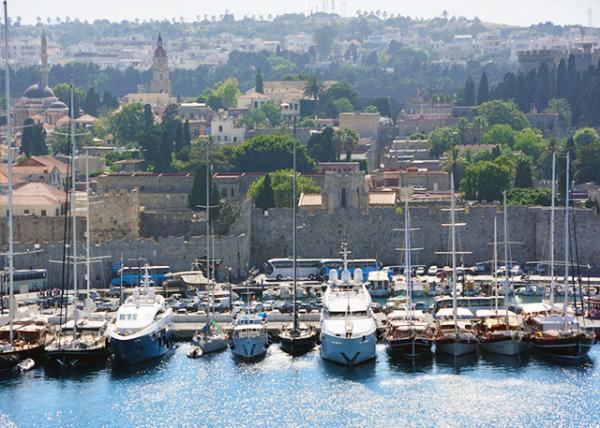 Kolona Harbor (科洛纳“防波堤”海港) Kolona Harbor (科洛纳“防波堤”海港)
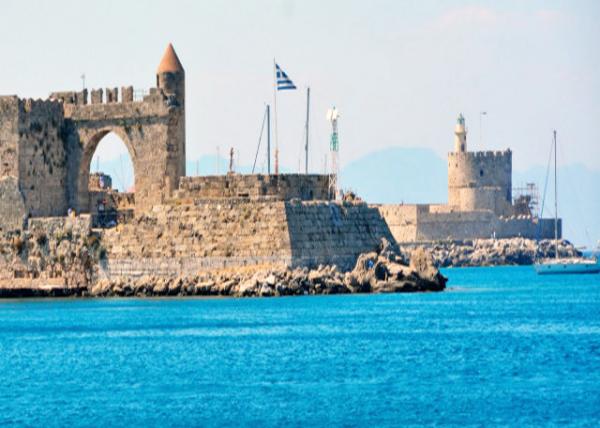 Gate of The Virgin across Kolona Harbour Gate of The Virgin across Kolona Harbour
(科洛纳港对面的圣母门) 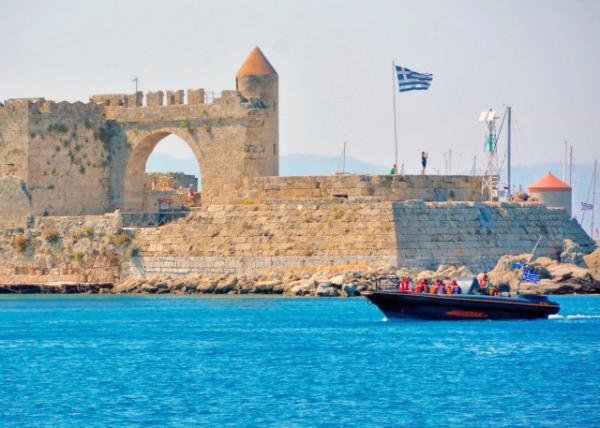
Naillac Tower, the Terminal of the Wall Belt Facing the Harbour & Used as a Watch Tower (奈拉克塔·面向港口的城墙带末端,被用作瞭望塔) 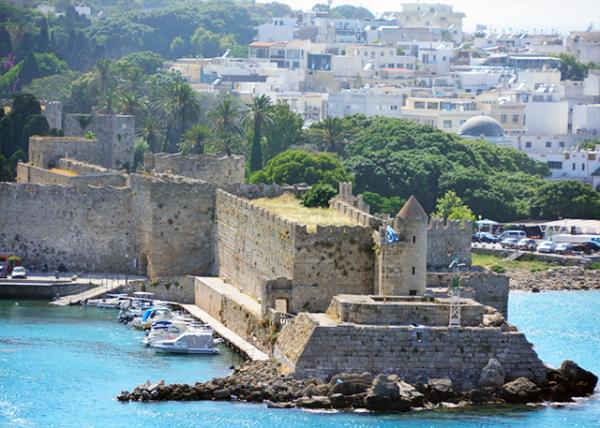 Naillac Pier (奈拉克码头) Naillac Pier (奈拉克码头)
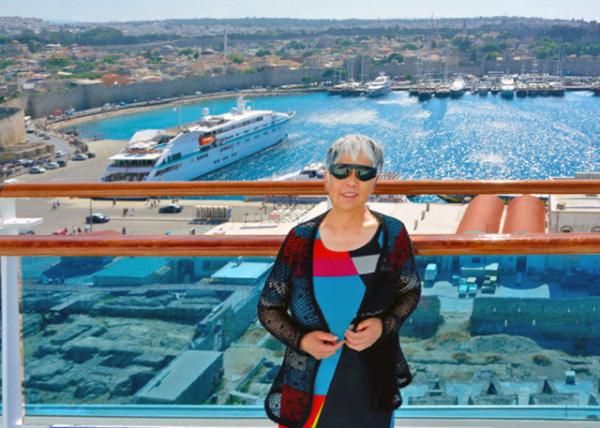 Panorama of Walled Old Town (老寨城全景 06-17-2015) Panorama of Walled Old Town (老寨城全景 06-17-2015)
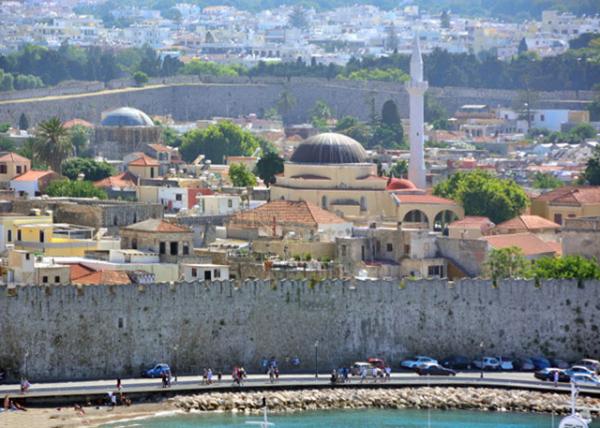 Close-up of Walled Old Town (老寨城近景) Close-up of Walled Old Town (老寨城近景)
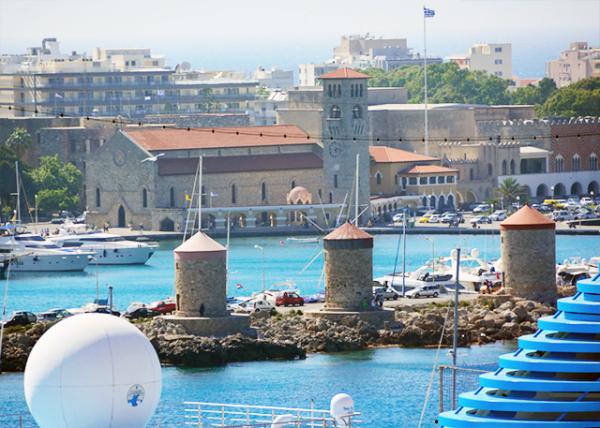 Mandraki Windmills (曼德拉基风车) Mandraki Windmills (曼德拉基风车)
 Sunset @ Aegean Sea (爱琴海日落 06-17-2015) Sunset @ Aegean Sea (爱琴海日落 06-17-2015)
 Boticelli Dining Rm of Emerald Princess Boticelli Dining Rm of Emerald Princess
(“公主·翡翠”号游轮——波提切利“小桶”餐厅 06-17-2015)  晚餐:法式洋葱汤、熏鳟鱼配奶油奶酪蛋白冻、尼斯料理·烤海扇贝蔬菜杂烩、小羊排小牛排沙嗲鸡串三部曲 晚餐:法式洋葱汤、熏鳟鱼配奶油奶酪蛋白冻、尼斯料理·烤海扇贝蔬菜杂烩、小羊排小牛排沙嗲鸡串三部曲
 三色冰激凌(巧克力软糖咖啡酒白色软干酪糖霜和芒果酸豆冰沙)、三角恋爱、希腊蛋糕、双重烤山羊奶酪蛋奶酥 三色冰激凌(巧克力软糖咖啡酒白色软干酪糖霜和芒果酸豆冰沙)、三角恋爱、希腊蛋糕、双重烤山羊奶酪蛋奶酥
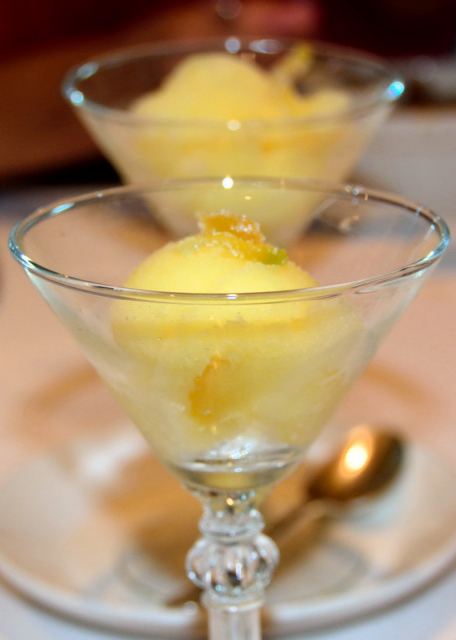
Orange Sorbet (香橙雪葩)  Fruit Punch (水果混合饮料) Fruit Punch (水果混合饮料)
Crosslinks(相关博文): Greece(出游希腊)
Europe(欧洲掠影) 6th Grade(初中一年级)
|
